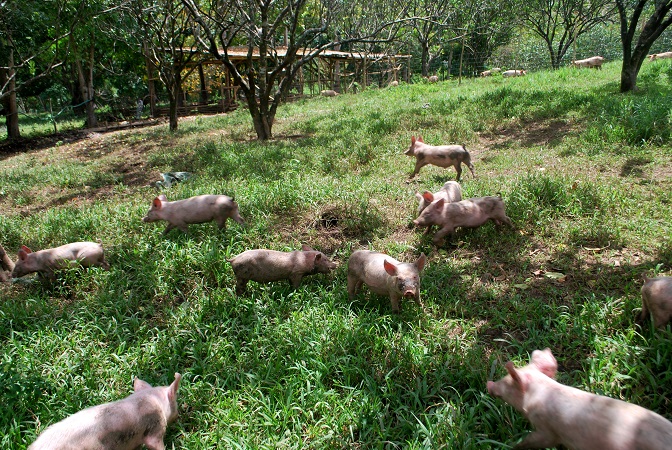

With free-range pig farming, you’ll be raising your own high-quality meat. Like other home-raised food products, meat from a homestead pigs is far superior in texture and flavor.
When two purebred pigs or a purebred and crossbreed are mated, the offspring pick up the positive traits of the parents, but they don’t carry over to the succeeding generation. With that in mind, what should you look for when shopping for crossbreeds? How can the novice find decent stock for the free-range pig farming on the homestead?
Young animals should be energetic and active, with clear eyes and healthy pink skin. Pass if a young pig has respiratory problems, coughs, wheezes or has swollen leg joints or other obvious flaws. When in doubt, wait for a better specimen.
Size is an important factor when choosing pigs for free range pig farming. Look for the biggest and healthiest piglets from the litter. It’s human nature to pull for the runt of the bunch, but it doesn’t work when choosing an animal for meat rather than as a pet. Runts usually stay that way, and you’ll end up paying the price in less meat for the table along with more frequent health problems.
Sometimes described as “sociable,” pigs enjoy the company of a fellow porker. Another mouth at the feed trough also provides the pig with competition for food and an incentive to eat and put on weight faster.
While there is the additional cost of feeding another pig, other chores related to free range pig farming such as watering and fencing will require the same amount of effort whether you’re raising a solo animal or a pair. If two pigs will provide you with more meat than needed, it’s hardly difficult to distribute the excess.
One former city dweller who now does free-range pig farming on his new homestead sells his excess pork to urban friends. Even with the cost of processing, they pay a little less than grocery store prices for factory farm pork and get organically raised meat at a big discount. The homesteader clears a profit, and everyone is happy with the arrangement. Surplus hams, chops, and bacon also make excellent gifts, and the cost to the giver is a fraction of what similar “gourmet” quality products would cost.
What about livestock auctions? They are definitely more of a risk for the first-time buyer or anyone with limited experience. You won’t be able to check out the piglets and their parents in familiar surroundings. Being transported from mama to a strange place will stress young pigs, and they could be exposed to sick animals.
This doesn’t mean that you can’t get decent stock for a fair price at an auction, but going to a local farm with a reputation for quality stock might be the wiser route for the newcomer. If the idea of buying at auction appeals to you, it could pay to bring along a more experienced advisor.
Should you choose barrows or gilts when buying pigs? The barrows put on weight a little faster, while gilts are slightly leaner. Since the pigs will be butchered before they reach breeding age, it’s not a major issue. Stick with the animals that have the most potential for a meaty carcass.
Part of your education should include visits to a homestead type of pig setup where others are doing free-range pig farming, rather than a factory farm that raises hundreds of hogs. The contacts and knowledge that can be gained from a small-scale operation will be of much greater value than learning the procedures of a corporate enterprise.
 Contact Jaguza Support
Contact Jaguza Support